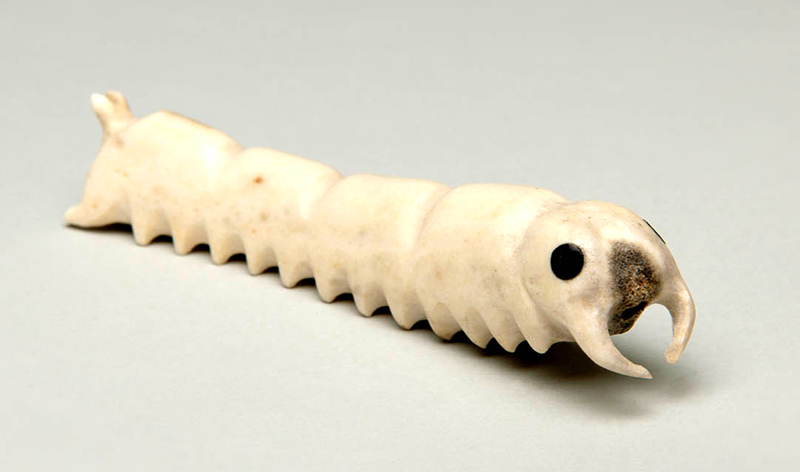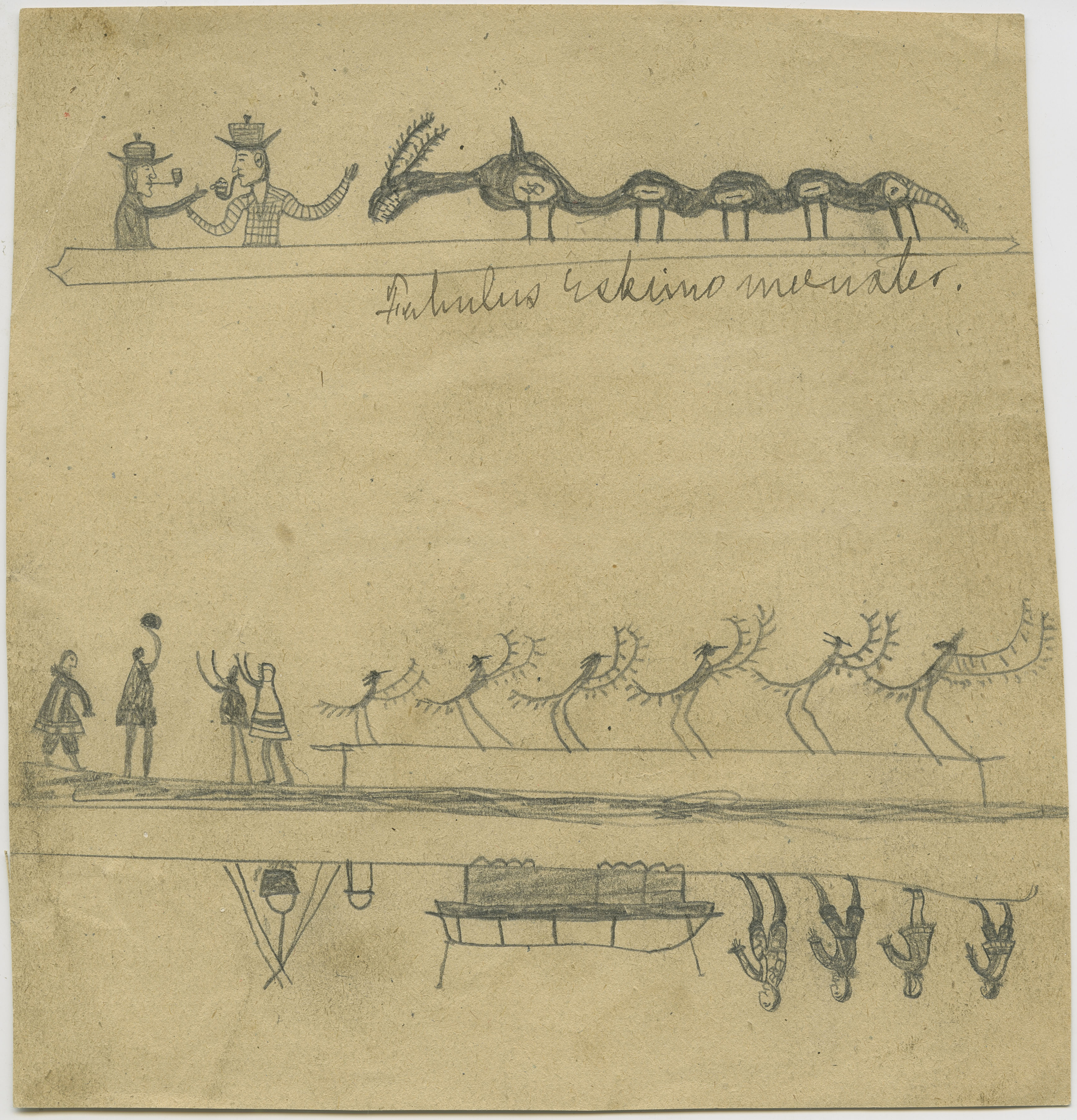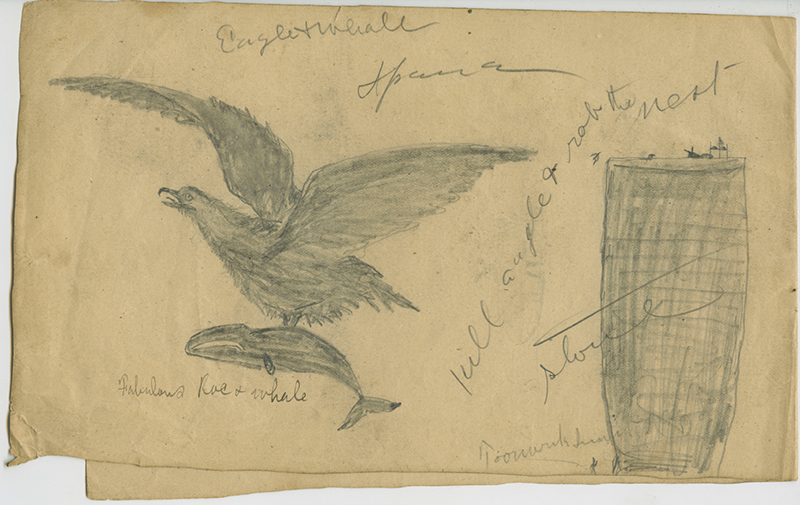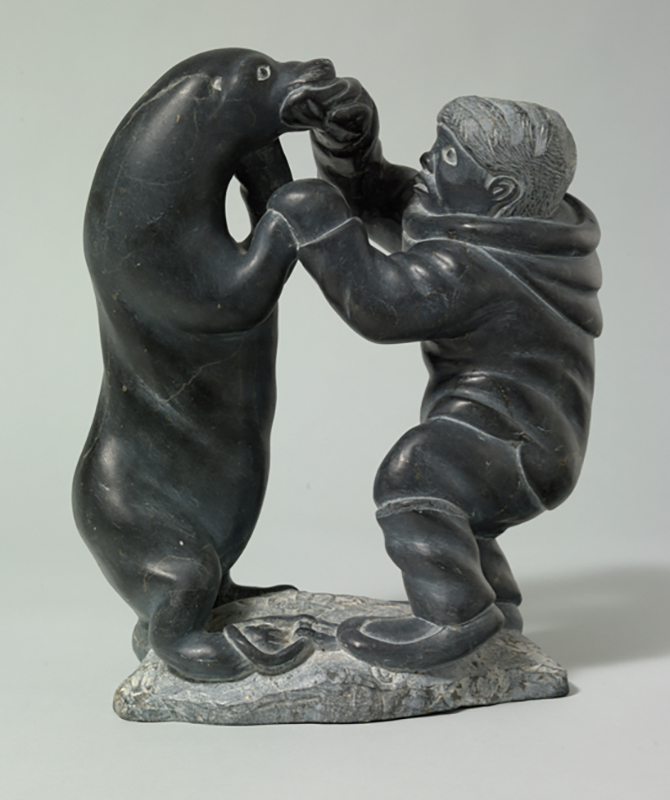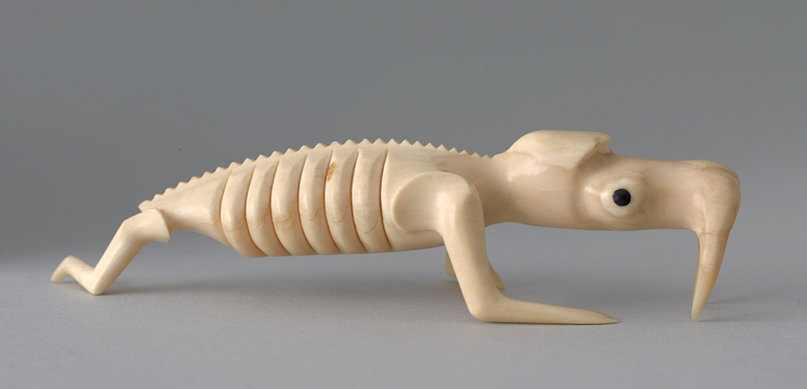Dates:
Location:
Arctic Museum main galleriesSelected Works
Monsters in the Water
In 1892 Iñupiat artists included monsters among the subjects of drawings they made for an American missionary at Siuġaq (Cape Prince of Wales, Alaska). Although pencil and paper were new to the Iñupiat, images of monsters were not.
Palraiyuk or Tizheruk is a lizard-like creature with many sharp teeth and multiple stomachs that lurks in shallow water, ready to devour people near the water’s edge. It poses a particular danger to kayakers. In the 1800s, people painted images of a Palraiyuk on their kayaks as a way of warding off danger.
Monsters in the Air
Tiŋmiaqpak is a huge eagle, capable of carrying a whale in its talons. It also preys on humans and can easily capture a kayaker. Tiŋmiaqpait often live in pairs in huge nests on the tops of mountains, where they raise their families.
Monsters on the Land
Hunters encounter various monsters on the land, from giant animals to transforming spirits. Lucassie Ikkidluak has carved a man struggling with an enormous otter that has managed to get its foot caught in a trap intended for a smaller animal. Levi Kudluarlik and Sabina Qunqnirq Anaittuq both depict hunters facing human-like creatures that have large heads and upraised arms.
Mythical Monsters
Inuit, like people all over the world, tell stories about encounters with monsters. Some are cautionary tales, warning of dangerous places and risky behaviors. Others tell of people cleverly overcoming perilous situations. Many describe the fearsome creatures that one might encounter and how to avoid falling prey to them.
Two-Faced Monsters
Nancy Pukingrnak invented these “two-faced monsters” with green bodies and included them in a number of her drawings and prints. They are malevolent creatures with a vampire-like attraction to human blood. Here they threaten a woman, as her husband tries to rescue her.
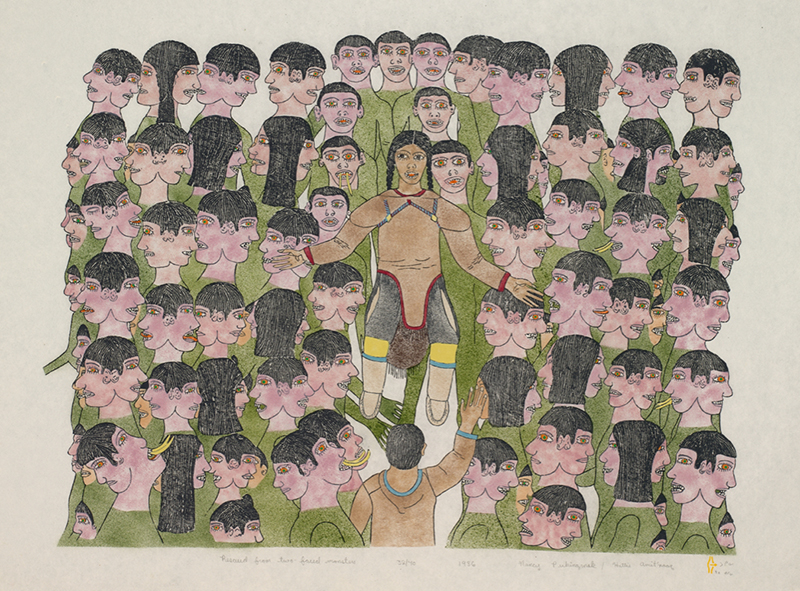
Creating a Monster
Carvers in East Greenland began creating images of tupilaks and other mythical creatures. They soon discovered that the more grotesque a piece was, the better their Western buyers liked it. A recognizable style developed, featuring grimacing, toothy mouths and exposed skeletal elements, but individual artists still found room to express themselves.
